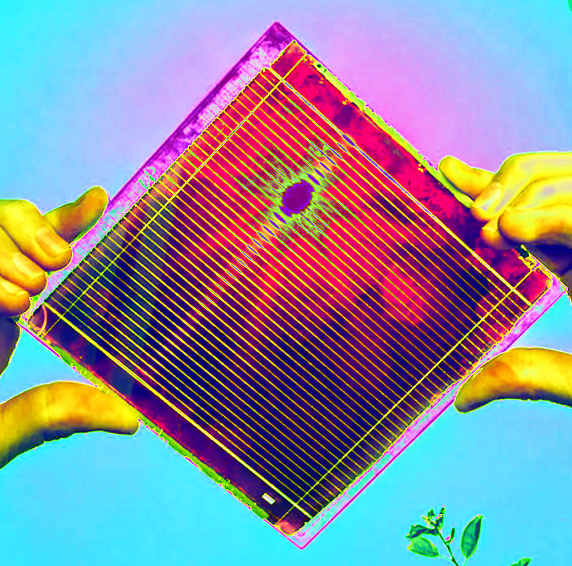Locals boost perovskite power
 Australian researchers are working with Oxford experts to create perovskite solar cells tough enough to match mighty silicon.
Australian researchers are working with Oxford experts to create perovskite solar cells tough enough to match mighty silicon.
Researchers at Oxford University and Australia’s ARC Centre of Excellence in Exciton Science have demonstrated a new way to create stable perovskite solar cells, with fewer defects and the potential to finally rival silicon’s durability.
Thin films made up of perovskite compounds are far cheaper to produce than silicon solar cells, with greater flexibility and a tunable band gap.
The technology emerged somewhat unexpectedly in the last decade and have reached impressive power-conversion efficiencies of over 25 per cent.
However, much focus has been placed on creating the most efficient perovskite solar cell, rather than resolving the fundamental problems inhibiting the material from being used in widespread commercial applications.
Compared to silicon, perovskites can degrade rapidly in real world conditions, with exposure to heat and moisture causing damage and negatively impacting device performance.
Solving these stability issues is the key challenge for perovskites in their quest to take on, or “boost” silicon via a tandem architecture and take their place in the commercial photovoltaics landscape.
In their recent research, scientists found that by removing the solvent dimethyl-sulfoxide and introducing dimethylammonium chloride as a crystallisation agent, they were able to better control the intermediate phases of the perovskite crystallisation process, leading to thin films of greater quality, with reduced defects and enhanced stability.
Large groups of up to 138 sample devices were then subjected to a rigorous accelerated ageing and testing process at high temperatures and in real-world conditions.
Formamidinium-caesium perovskite solar cells created using the new synthesis process significantly outperformed the control group and demonstrated resistance to thermal, humidity and light degradation.
This is a strong step forward to matching commercial silicon’s stability and makes perovskite-silicon tandem devices a much more realistic candidate for becoming the dominant next-generation solar cell.
Led by Professor Henry Snaith (Oxford University) and Professor Udo Bach (Monash University), the work has been published in the journal Nature Materials and is available here.
Oxford University PhD student Philippe Holzhey, a Marie Curie Early Stage Researcher and joint first author on the work, said: “It's really important that people start shifting to realise there is no value in performance if it's not a stable performance”.
“If the device lasts for a day or a week or something, there's not so much value in it. It has to last for years.”
During testing, the best device operated above the T80 threshold for over 1,400 hours under simulated sunlight at 65°C. T80 is the time it takes for a solar cell to reduce to 80 per cent of its initial efficiency, a common benchmark within the research field.
Beyond 1,600 hours, the control device fabricated using the conventional dimethyl-sulfoxide approach stopped functioning, while devices fabricated with the new, improved design retained 70 per cent of their original efficiency, under accelerated ageing conditions.
The same degradation study was performed on a group of devices at the very high temperature of 85°C, with the new cells again outperforming the control group.
Extrapolating from the data, the researchers calculated that the new cells age by a factor of 1.7 for each 10°C increase in the temperature they are exposed to, which is close to the 2-fold increase expected of commercial silicon devices.








 Print
Print